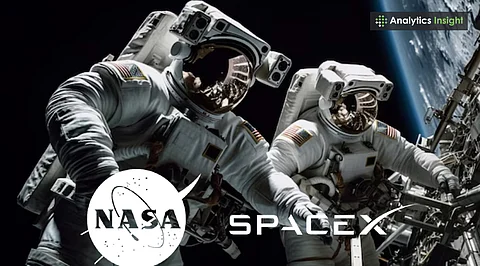

The Crew-11 mission, a collaborative effort between NASA and SpaceX, is set to send four astronauts to the International Space Station for a period of six months. The crew members designated for this mission are Zena Cardman, Mike Fincke, Kimiya Yui, and Oleg Platonov.
Cardman has been appointed as the commander, while Fincke is the pilot, and the other two as mission specialists. This is the first space mission for Cardman and Platonow.
While weather officials predict a 90% probability of favourable launch conditions, cumulus clouds remain as one of the major concerns during the liftoff. These stacked clouds can sometimes trigger lightning and cause serious harm to the rocket. Furthermore, the updrafts from these clouds could also alter the rocket’s trajectory.
The Boeing Starliner program’s ongoing delays have impacted the crew assignments for the upcoming Crew-11 mission. Initially assigned to Crew-9, Zena Cardman was reallocated to Crew-11 to free up seats for Boeing Starliner astronauts who were going to return through SpaceX Dragon.
Furthermore, the technical issues with the Starliner capsule, Fincke and Yui, who were originally assigned to that program, were reassigned to Crew-11.
Also Read: Crew-10 Mission: SpaceX’s Latest Step in Keeping the ISS Alive
The main goal of Crew-11 is to advance stem cell manufacturing and enhance in-orbit data processing capabilities. Another key element of this mission involves studying engineered liver tissue.
This research would be very significant for regenerative medicine as it could potentially help repair or replace damaged tissues and organs in the human body. The operation’s success can prove to be beneficial in treating heart diseases, Parkinson's disease, spinal cord injuries, and more. It can also minimize the dependency on organ donations significantly.
One of the central investigations to be made during this mission will be to find out whether the microgravity environment in space can produce more cells than in the Earth environment.
Also Read: NASA and SpaceX Expedite Crew-9 Astronauts' Return Amid Extended ISS Mission
To sum up, NASA and SpaceX are launching a combined mission - Crew-11. This mission will involve four astronauts who will be sent to the International Space Station to conduct research mainly on advanced stem cell manufacturing.
This research can help the field of regenerative medicine, facilitating the repair, replacement, and regeneration of tissues and organs. This can be a significant achievement in the field of medicine if microgravity accelerates the cell production 1000 times more than the Earth's gravity.
